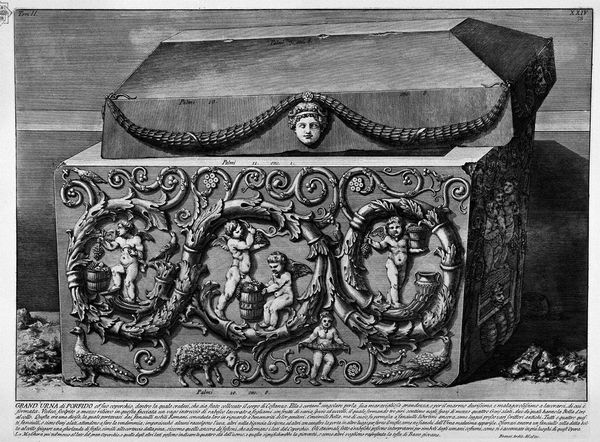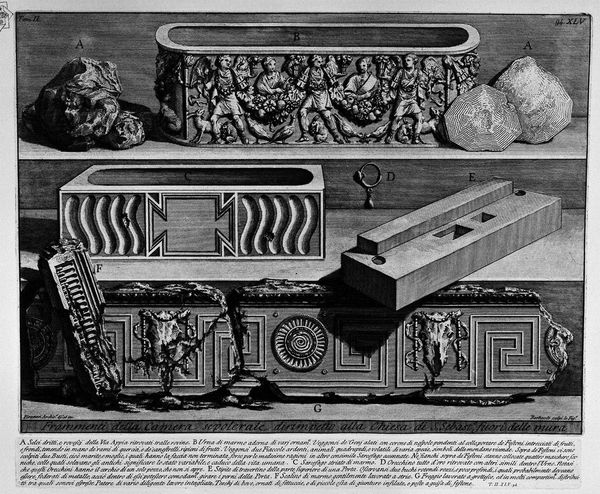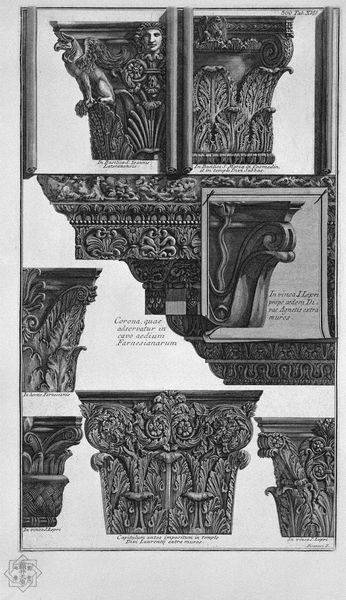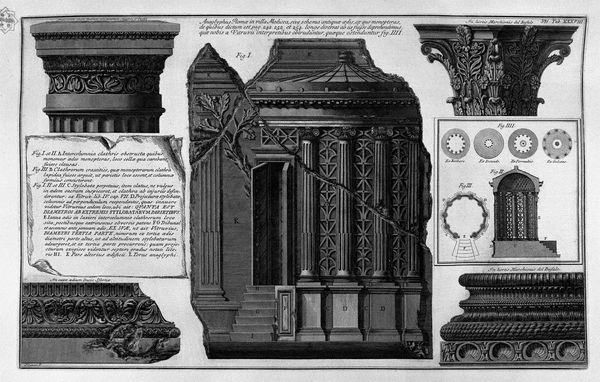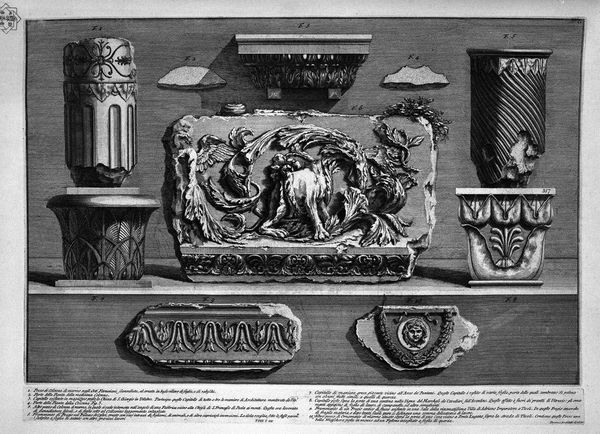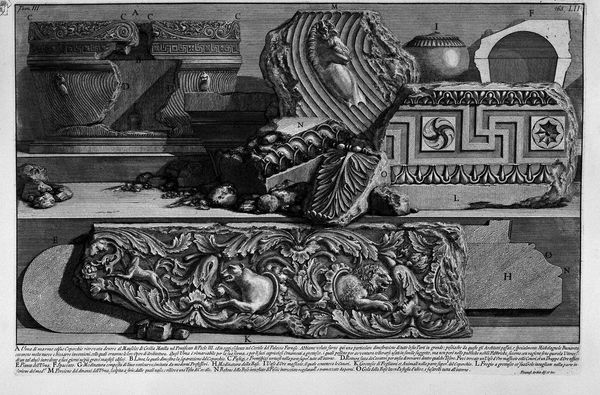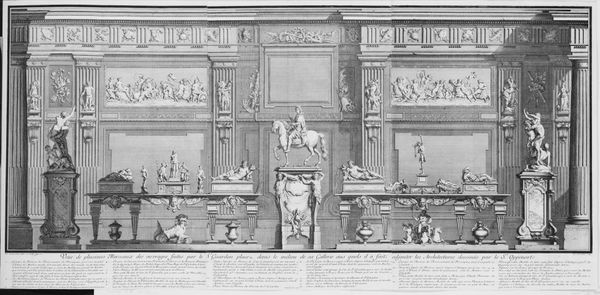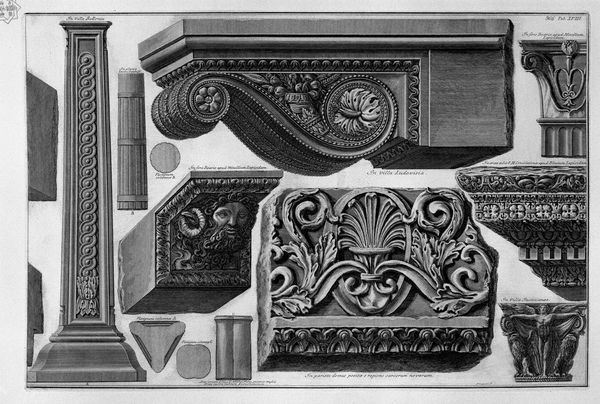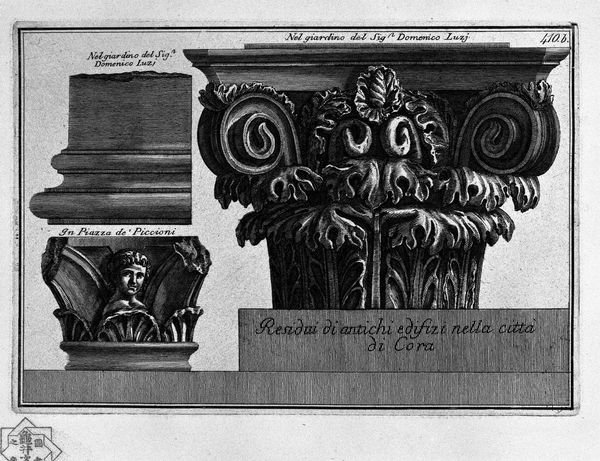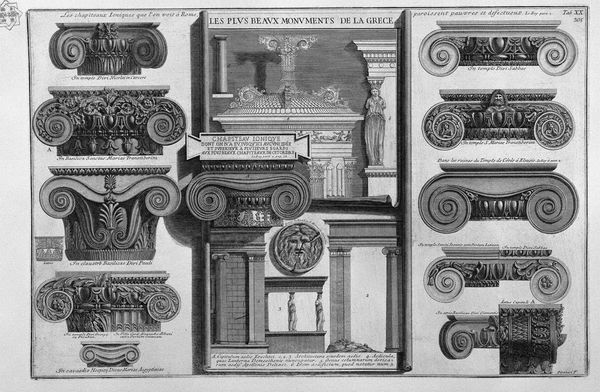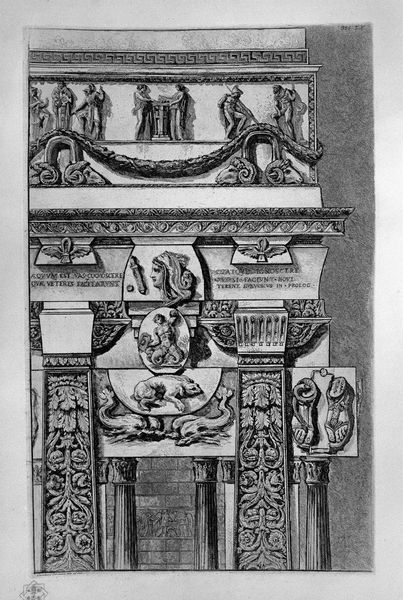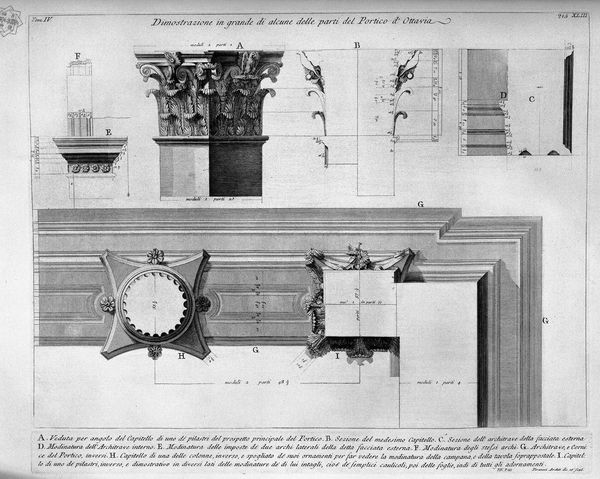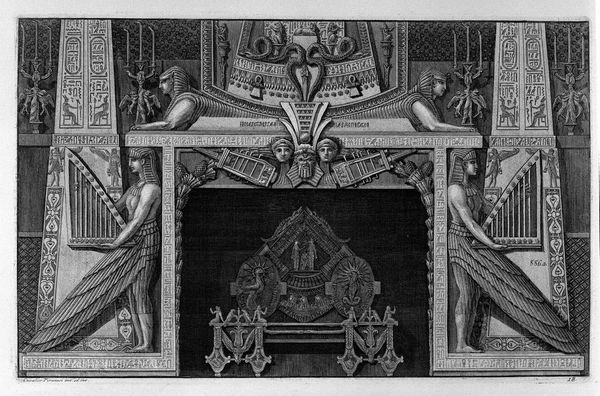
The Roman antiquities, t. 2, Plate XX. Inscriptions and fragments of the burial chamber above. 1756
0:00
0:00
print, engraving
# print
#
old engraving style
#
romanesque
#
highly detailed
#
geometric
#
limited contrast and shading
#
line
#
history-painting
#
engraving
#
intricate and detailed
Copyright: Public domain
This is Giovanni Battista Piranesi’s etching, “Inscriptions and fragments of the burial chamber above,” from his series Roman Antiquities, made in Rome in the 1750s. Piranesi was a Venetian artist who moved to Rome and became fascinated with its ancient ruins. But Piranesi wasn’t just interested in documenting these ruins; he wanted to revive a sense of Rome’s former glory. To do that, he didn’t just represent the ruins as they were. Instead, he reconstructed them, combining real fragments with his own imaginative additions. Notice how the individual pieces are laid out for the viewer, as if to show how the puzzle could be put back together. Piranesi’s etchings catered to the Grand Tourists of the 18th century, wealthy Europeans who traveled to Rome to experience its culture. His images fed their desire for souvenirs, but they also shaped their understanding of Roman history. They were powerful tools in the construction of a shared European cultural identity. To understand Piranesi, we can consult his original etchings at the Avery Architectural & Fine Arts Library. We might also look at period guidebooks and travelers' accounts to understand the context in which he was working.
Comments
No comments
Be the first to comment and join the conversation on the ultimate creative platform.
